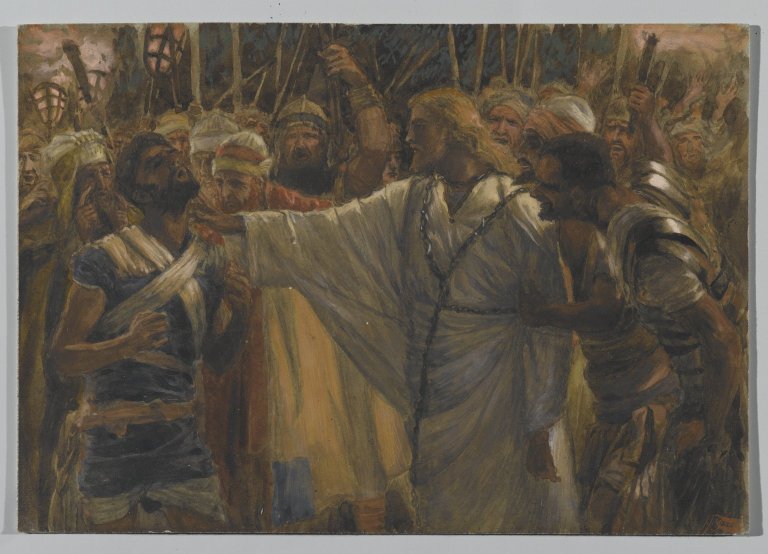Read John 18:1-14
The Washington Post published a story that occurred on the streets of London in the wake of George Floyd’s murder. Demonstrators clashed with far-right activists. A photographer in the crowd heard, “That’s not what we do!” At that moment, black demonstrator Patrick Hutchinson emerged carrying a white man over his shoulder. Hutchinson and four friends had protected – and likely saved the life of – their political opponent. Reflecting on his actions, Hutchinson said: “If the other three police officers that were standing around when George Floyd was murdered had thought about intervening, and stopping their colleague from doing what he was doing, like what we did, George Floyd would be alive today still.” Hutchinson showed himself to be a man of peace.
Jesus finds himself in an equally tense situation. He had been betrayed by Judas, surrounded by a band of soldiers, and faced imminent arrest. Jesus’ first act is to guarantee the safety of his disciples. Peter, misunderstanding the way of Jesus, slashes the ear of an opponent nearby. Jesus rebukes Peter for matching violence with violence. While his entire body was threatened, Jesus restores an ear. (Luke 22:51)
Making peace on behalf of the enemy
The full extent of Jesus’ love is on display as he extends healing beyond his friends to his enemies. Jesus has all the power of His Father at his fingertips, but rather than using his privilege and power for his own safety, he uses it on behalf of his enemies. (Matt 26:53) Whether he could see it at the time or not, Caiaphas is ultimately correct when he says it is better for one man to die for the people. This is exactly what Jesus does with his power. He willingly yields to his enemies, letting them do their worst to him, so he can make peace between people and God. His peace enables us to become people of peace for each other.
How do you, like Peter, indulge hot-headedness? How can you learn from Jesus instead how to live a life of radical peace – in your words and in your actions?
Written by Chris Coble
Artwork by James Tissot, The Healing of Malchus, Online Collection of Brooklyn Museum; Photo: Brooklyn Museum, 2008, 00.159.239_PS2.jpg

